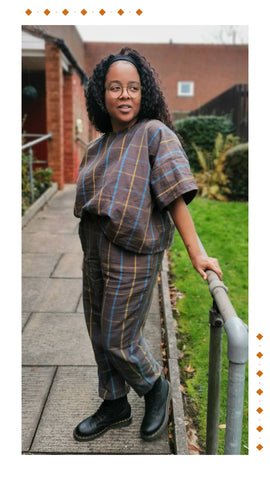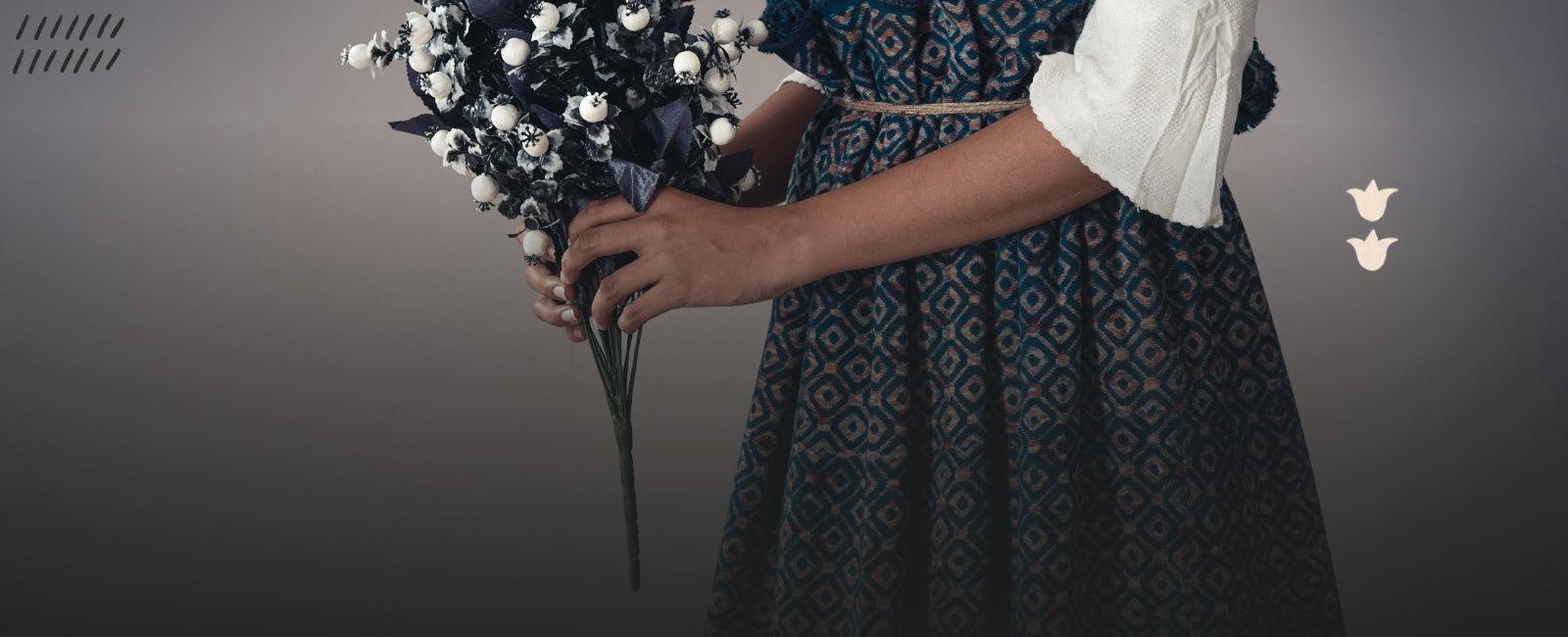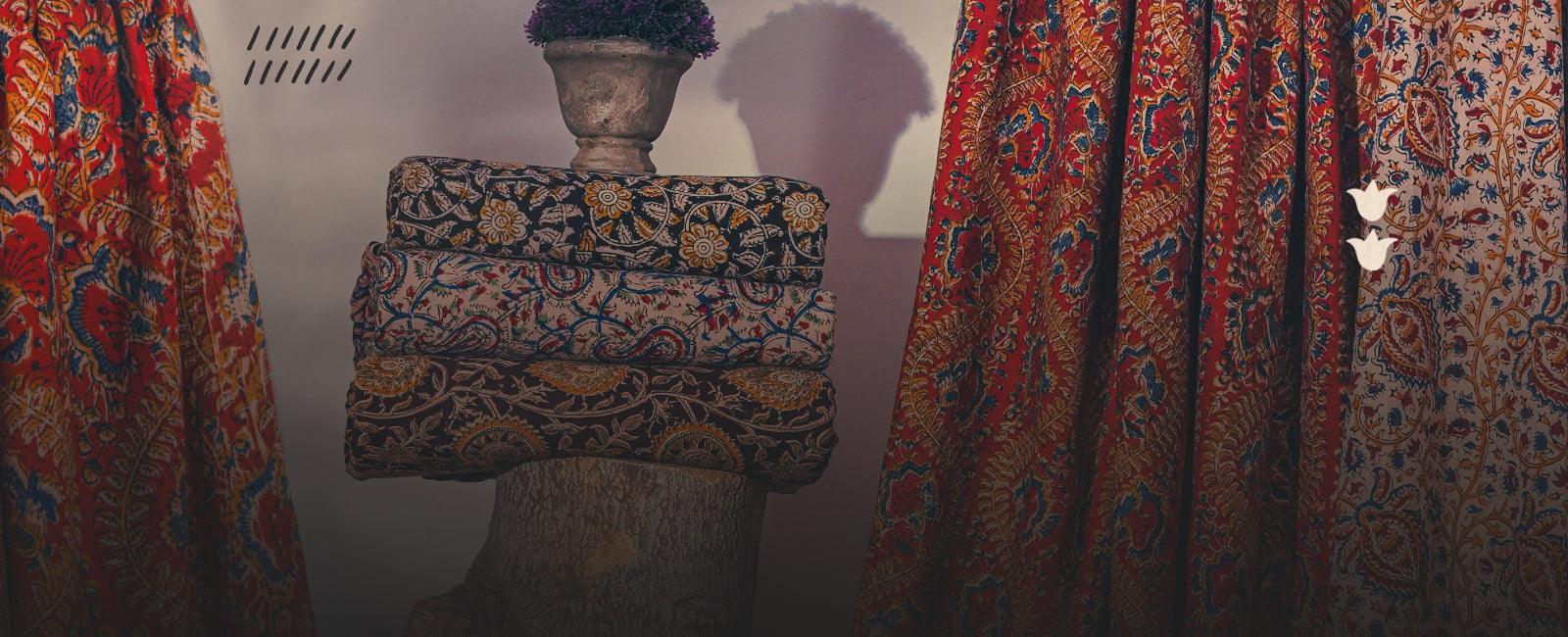Over to her...
I just had to jump on the checked trouser trend when I saw window pane check handloom cotton fabric on fabriclore.com. I had envisioned a pair of trousers in this style and I used the Fremantle Pants pattern from Elbe textiles to bring the vision to life. This is a gender neutral, beginner friendly pattern with 3 length options and hip sizing from 32.5inches to 61.5inches . A medium weight fabric
works well with this pattern.

This grey handloom woven fabric has yellow and blue stripes creating a window pane design. The fabric is a part of a hand-picked curation of woven window pane checks, gingham and stripes in a wide variety of colours. The window pane design was my favourite, just something about this combination of colours really spoke to me.

Trouser patterns are relatively simple , especially if the design is loose fitting. It is still a good idea to make a mock up version ( also known as a toile) before making in your chosen fabric. The instructions for the pattern are very clear and when making this pattern you’ll use the following skills:
• Making pockets
• Creating waistband
• Adding a drawstring (if desired)

The Fabric
When the fabric arrived I prepared it according to the instructions on the website. They suggest a gentle handwash and recommend soaking the fabric in salt water for 3-4 hours before you begin stitching. After following those instructions, I cut the pattern for my trousers. The fabric is 43inches wide so bare this in mind when choosing your pattern. More fabric is needed when matching stripes so also consider this when selecting your fabric amount.
This woven fabric was created on a handloom so the weave of the fabric isn’t as tight as regular cotton so avoid making garments that are tight fitting and may put stress on the seams. Allow the fabric to drape and display the checks perfectly

The Pattern


I did consider a small amount of pattern matching when making these trousers. There are 2 pockets at the back and I tried to line up the stripes while attaching them. The stripes may not line up perfectly but the lines are straight which is pleasing to the eye. True pattern matching requires some effort and extra fabric but I was able to keep the pattern undisturbed by matching some of the lines and keeping the pattern flowing.


With the remnant fabric I drafted a simple top. I made it as an afterthought in one sewing session and in all honesty I neglected to take notes while I made it. There is a very similar tutorial on www.diydaisy.com called The Rectangle sleeve top. Great for using up leftover fabric.
The Result





